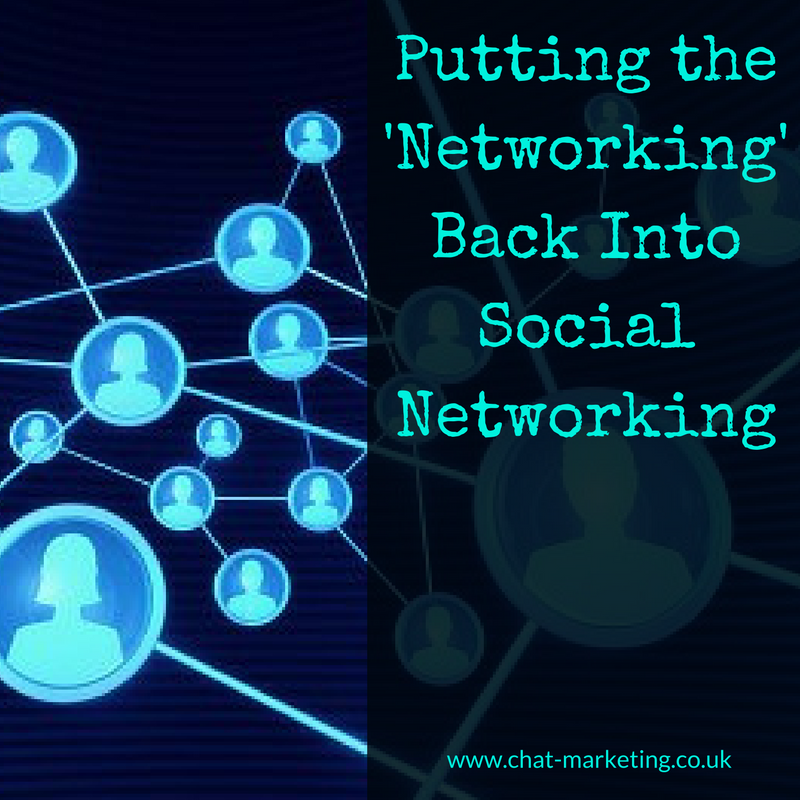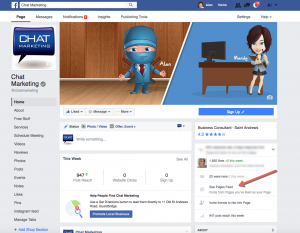Putting The ‘Networking’ Back Into Social Networking
Most Popular
Our Testimonials
- "When it comes to social media Alan is extremely knowledgeable, easy to get on with and it was a pleasure to work with him. He is one of life’s good guys. Nothing is too much trouble for him. He listens to your social media challenges and gives you strategies and tools that work."Maureen Sharphouse
Coach, Speaker, Mentor - “Chat Marketing have helped steer us through the bewildering array of Social Networking opportunities and have shown us how to get the most out of this medium from a business point of view. Alan is easy to work with, a good listener who delivers excellent results.”David Adams
Adams Law - “I've just attended Chat Marketing's "Twitter4Business" workshop this morning. What an excellent and informative event. I would highly recommend Alan and Chat Marketing to any business looking to get started in the bewildering world of social media. Many thanks Alan.”Andy Perkins
F8 Venues

Before we dive into specific tactics let’s define exactly what ‘Social Networking’ means. According to Google, Social Networking involves “the use of dedicated websites and applications to interact with other users, or to find people with similar interests to one’s own.”
What this means from a marketing perspective is that social networking is about strategically engaging with identified individuals on social media, who could potentially benefit your business in the long term. This definition includes both referral partners and people who have influence over your potential customers.
An example of this might be re-tweeting content from influencers or potential referral partners. Influencers might be industry experts or someone in the media that you are trying to get the attention of. Referral partners could be people that share the same customer base as you do but are not direct competitors.
A local accountant would be a good example of a potential referral partner for Chat Marketing. They don’t offer social media services but their clients are typically business owners that could potentially be interested in social media coaching.
Unless your influencers and referral partners happen to be rock stars with millions of adoring fans and followers, most people will notice that you have been sharing their content on social media and are likely to feel more positive towards you as a result. Think of this as part of your PR strategy!
By regularly sharing content, commenting on posts, liking tweets, mentioning people in Follow Friday’s etc, you will be thought of as the ‘good guy’.
So how do we put this into practice in a systematic way?
Step 1…
The first step is ‘Identify your Audience’. Create a spreadsheet with two tabs. One for Influencers and another for referral sources.
Within each tab list the names of the people or companies that you want to include in your campaign. Along the top you will want to have columns set up for each of the main social networks, which you should populate with the URL’s of the social accounts that you want to engage with.
Ninja Tip – Create a third tab in your spreadsheet for potential clients/customers that you would like to work with and include them in your social networking campaigns as well.
Step 2…
Put systems in place so that you can more easily see social media updates from your target audience. The easier it is to see the updates, the more likely you will be to take action.
At the very least I would recommend setting up Twitter lists for each of your audience types (remember to mark these lists as Private) and ‘Like’ the Facebook Pages from your Business Page. That way you will see the posts on your Home Page, without the need to go looking for these accounts every time.

I would also recommend that you set up streams within your social media dashboard of choice, such as HootSuite or TweetDeck, that will automatically pull in updates from your lists.
Step 3…
Step 3 is simply ‘Make it Happen’, or JFDI if you prefer! Build this activity into your social media schedule so that you are routinely engaging with your influencers and referral partners.
You DO have a social media schedule, don’t you?
When you notice people asking questions related to your industry or area of expertise, you should try referring them to content that can help them out (ideally content on your own website but even referring them to a 3rd part source can be valuable to them). Setting up alerts for certain keywords will help you find these interactions more easily.
Conclusion
Isaac Newton once said “If I have seen further than others, it is by standing on the shoulders of giants”. No business is an island and it is a mistake to think that you can do it all yourself without the help of others. If you want to get to where you want to go faster, it is more efficient to leverage the relationships that you have built up with influencers and referral partners, and social media is a great place to start building these relationships.
Start by putting the systems and tools in place now to make Social Networking a regular part of your marketing strategy.
Other Articles You’ll Like
Getting Started with Email Marketing: From Fans to Customers

